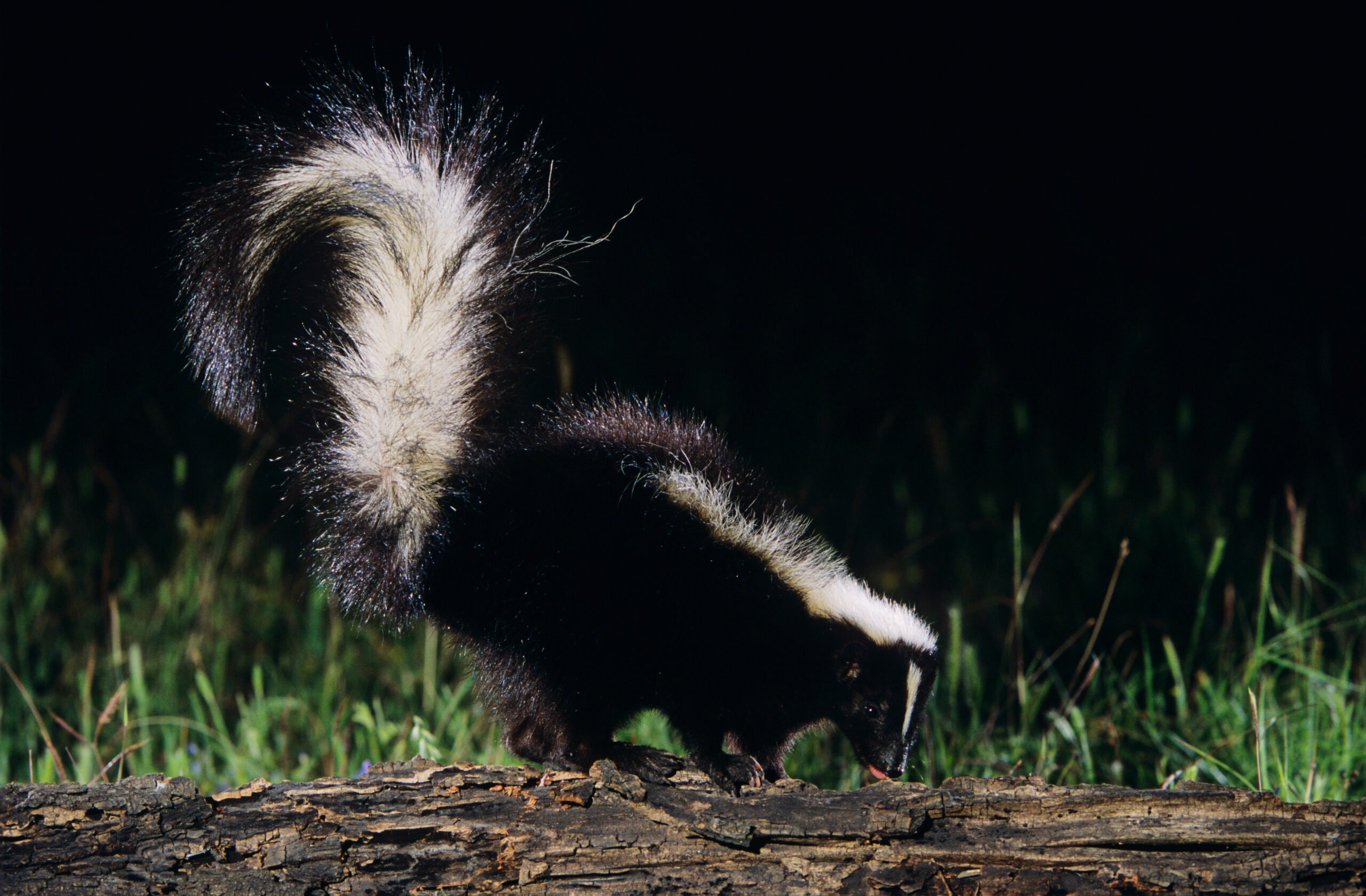In a final message, Jane Goodall urged us not to lose hope, even “as we destroy one ecosystem after another, as we create worse climate change and worse loss of biodiversity.” She believed our actions still mattered on this beautiful Earth. Above all, she said, in a statement released soon after her October 1 death: “I want you to understand that we are part of the natural world.”
For some years now, I have been studying the art of wildlife tracking—specifically the identification of tracks and signs—as a way of deepening that understanding. I want to slow down, bend down, look, and really see. Humans have been doing this for millennia: matching shapes on the ground to meaning and story.
In my own life, this new competence in the natural world has connected me more deeply to that world, with a greater desire to preserve its beauty and health. My intention is not to trail wild animals. I have no desire to startle or interfere in their secret lives, which are often short and already difficult.
I received training from expert tracker Jonah Evans, a supervisor in the Texas Parks and Wildlife Department, and I follow his creed: Do no harm.
Instead, I find pleasure in seeing a track in the dirt and knowing that a striped skunk or bobcat or blue heron recently stood here. Perhaps an hour ago. Perhaps a day or week. As I bend down to look, I am profoundly, thankfully, aware that I’m not alone but surrounded by the nonhuman.
In particular, I love skunks. Whenever I see a skunk, I think: fashion show. Something from Chanel. A bit of art deco. That black and white aesthetic.
Texas is lucky to have four skunk species. The striped skunk seeks cities and suburbs partly for denning opportunities under porches and in garden and tool sheds. The hefty hog-nosed skunk can weigh up to ten pounds and uses its long claws for digging and its powerful upper body and elongated snout to explore rocky areas; the back of a hog-nosed skunk tends to be luminously white, from the top of the head to its tail.
The smallest and most carnivorous, Western and Eastern spotted skunks, both have coats of partial stripes or spots.
All skunks, when threatened, might raise their tails and use a defensive spray. This concentrated sulfurous fluid can be deployed with accuracy at targets six feet away and with less accuracy up to 15 feet.
Spotted skunks further intimidate by doing a handstand on their front feet, performing a split with their back legs, and walking forward in imitation of a flying carpet. Stop and imagine that for a moment, or watch it on YouTube.
But skunks don’t want to use up their musk and might instead eject a warning smell or hiss and stamp their feet. If these strategies fail, a striped skunk will twist into a U shape so that its eyes and rump both face the threat.
Its spray can burn skin and cause temporary blindness. The odor alone—a mix of rotten eggs, rotting cabbage, burnt garlic, burning tires, and something undecipherable—makes some people gag. Everyone, instinctively, backs away.
Still, I rarely worry about a skunk targeting me (mostly because I don’t bring along a barking dog). I keep a good distance from any wild animal, and healthy skunks are not usually aggressive.
The result of their strong defense system is that skunks can often seem relatively docile and carefree. Adult striped skunks, weighing only a few pounds, have been videotaped eating from a carcass while a fox or mountain lion waits nearby.
In 2017, Ohio State University biologist Stan Gehrt looked on while three coyotes circled a skunk atop a dead deer. The coyotes approached, retreated, split up, whined, fussed, nipped forward, nipped back.
“It was hilarious watching this little animal standing on top of a dead buck, holding a pack of coyotes at bay,” Gehrt said, according to an account in the National Wildlife Federation journal. “The skunk never even sprayed.”
Like other animals who have learned to adapt and live among humans (think coyote and white-tailed deer), the decorative striped skunk remains relatively common, though populations of the hog-nosed skunk and Western and Eastern spotted skunks have dropped.
Globally, the Eastern spotted skunk has been listed as Vulnerable by the International Union for Conservation of Nature, which tracks endangered species worldwide. In the Lone Star State, this species is particularly threatened by habitat loss due to agriculture, use of pesticides, and urban sprawl.
This is part of a larger alarming trend. In Texas, more than 1,300 animals and plants have been identified by experts as Species of Greatest Conservation Need, either rare or declining.
Among the most endangered are charismatic creatures like ocelots and black bears. Rising sea levels and increased water temperatures particularly threaten the Kemp’s Ridley sea turtles and whooping cranes.
(Whooping cranes can also be seen as a success story. Extensive conservation efforts have helped them rebound in Texas from near-extinction to a migratory population of about 400.)
Climate change and disappearing or degraded habitat are causing similar losses worldwide. The populations of more than five thousand species of fish, reptiles, amphibians, birds, and mammals have dropped by 73 percent since 1970, according to the World Wildlife Fund.
Humans and domesticated livestock now account for 96 percent of the weight of mammals worldwide. Wild mammals add up to only 4 percent. The scientific term is defaunation.
At first, that word feels awkward, stilted, like marbles in my mouth. Defaunation. Then it becomes exactly right.
These losses are deeply felt by me and many other people. But loss is only part of the story and not where I like to focus my attention.
I prefer the pleasures of identifying track and sign. A perfect skunk track is artwork on the ground. About 1½ to 2 inches long, with five toes, the prints look winsomely like small human hands.
On both front and back feet, the three middle toes are partially fused to facilitate digging. Two outer toes are only slightly splayed to the side. Front and hind tracks usually show handsome claw marks, with the digging claws of the front feet longer than the rear.
In the hind track of a striped skunk, the single large heel pad is separated from the palm pad by a distinct seam, a distinguishing mark. That distinct seam always gives me a ping of satisfaction. Pattern recognition is its own reward.
Skunks—and coyotes—are often considered “pests,” something to dismiss or even scorn. But these animals belong to the wild world that remains on Earth, that ribbon of life winding secretly through our lives, slipping around our house at night, just ahead of us on the trail.
They are precious reminders of what we have not yet destroyed or diminished.
In identifying the track and sign of wildlife, I want to celebrate and name them: “Striped skunk!” “Tree squirrel!” “Bobcat!” or “Gray fox!”
This is a democratic thrill, something almost anyone can have almost anywhere, something you can do at almost any age or in any physical condition.
So I bend down to look, using my imagination, my mirror neurons, and, yes, my reading glasses.
https://www.texasobserver.org/jane-goodall-nature-skunks-tracking/



